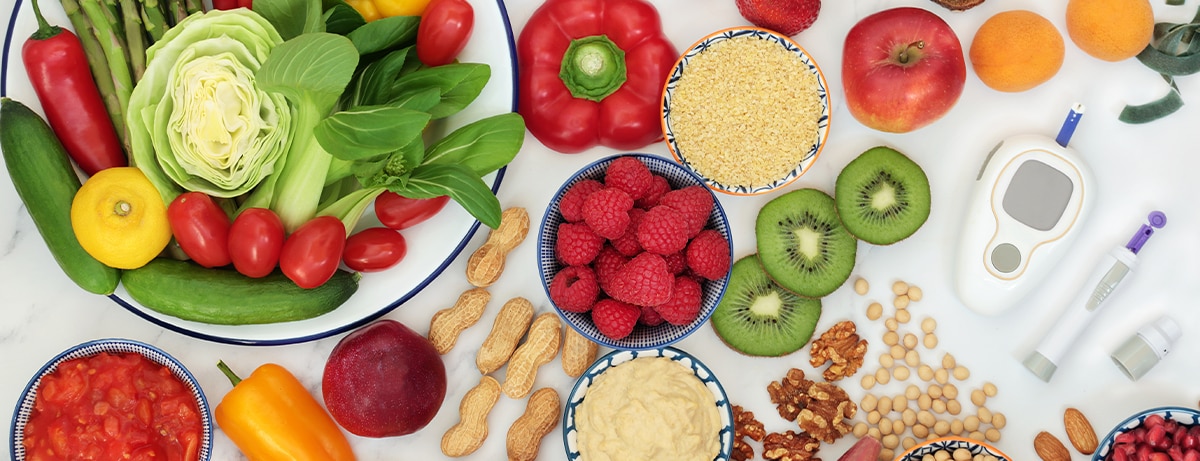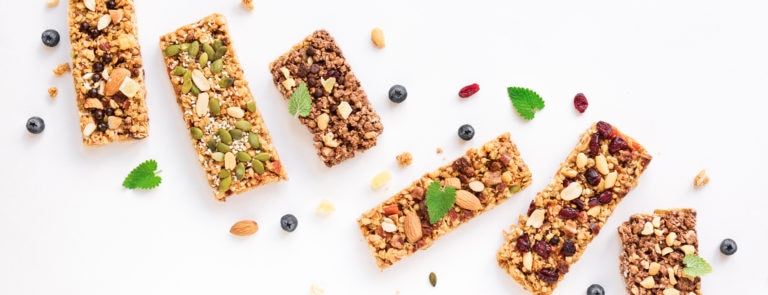15% off €35 or 20% off €45
How to keep your blood sugar balanced with food

Summary
1What happens when blood sugar is too high/low?
Whilst your blood sugar fluctuates throughout the day, blood sugar that is too low or too high can affect your health, especially if you have levels..
2How can you raise your blood sugar levels?
To help raise your blood sugar when it is too low, it’s recommended that you follow the 15-15 rule. This is where you should eat about 15g of...
3How can you lower your blood sugar levels?
If your blood sugar level is too high, there are foods that lower blood sugar levels and help to keep it under control...
What happens when your blood sugar is too high or low?
- Blurred vision
- Weight loss
- Feeling weak and lethargic
- Feeling very thirsty
- Needing to urinate more
- Sweating
- Feeling tired
- Feeling dizzy
- A fast heartbeat
- Turning pale
- Feeling shaky

How can you raise your blood sugar levels?

How can you lower your blood sugar levels?
- some fruit and vegetables
- pulses
- whole grains
- whole grains
- egg yolks
- bran cereals
- nuts
- meat
- vegetables like broccoli

The final say
1. https://www.diabetes.co.uk/how-to/bring-down-high-blood-sugar-levels.html
2. https://www.nhs.uk/conditions/high-blood-sugar-hyperglycaemia/
4. https://www.childrens.com/specialties-services/conditions/pediatric-hyperglycemia
5. https://www.nhs.uk/conditions/low-blood-sugar-hypoglycaemia/
7. https://diatribe.org/eating-fruit-diabetes
8. https://www.nhsinform.scot/illnesses-and-conditions/blood-and-lymph/hypoglycaemia-low-blood-sugar
9. https://www.diabetes.co.uk/food/juice-and-diabetes.html
10. https://www.diabetes.co.uk/food/milk-and-diabetes.html
11. https://www.ncbi.nlm.nih.gov/pmc/articles/PMC6360845/
12. https://diabetes.org/healthy-living/recipes-nutrition/understanding-carbs
13. https://www.diabetes.co.uk/diet/low-carb-diabetes-diet.html
14. https://www.ncbi.nlm.nih.gov/pubmed/18495047
15. https://www.nhs.uk/common-health-questions/food-and-diet/what-is-the-glycaemic-index-gi/
16. https://www.cdc.gov/diabetes/library/features/role-of-fiber.html
17. https://www.ncbi.nlm.nih.gov/pubmed/10731498
18. https://www.ncbi.nlm.nih.gov/pubmed/27044603
19. https://www.ncbi.nlm.nih.gov/pubmed/21994426
20. https://www.nhs.uk/live-well/eat-well/food-guidelines-and-food-labels/water-drinks-nutrition/
22. https://ods.od.nih.gov/factsheets/Chromium-HealthProfessional/



